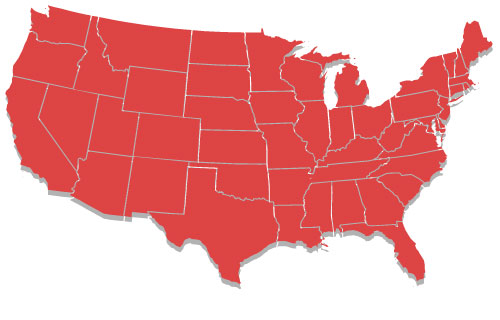Anthony Di Iulio and his team at American Underwater Services often work on golf course and HOA ponds. They frequently get asked about pond maintenance and cleaning. Recently they were asked why ponds needs plants. Here is their response.
A pond without plants is nothing more than a hole in the ground that’s filled with water. While water is an attractive feature, it’s best supplemented with plants of various types. They’ll not only help improve the aesthetics, but provide critical life-support systems for the animals and fish that live in them.
Regardless of whether you’re a homeowner or HOA/golf course manager who’s been tasked with the maintenance and upkeep of the ponds, here are a few reasons why you should consider adding some plants when the weather starts to warm up:
Shelter
Fish and other aquatic wildlife need shelter from both predators and the blisteringly hot summer sun. Such plants as water lilies can provide shade from which fish can take refuge. They’ll also help keep the water temperatures down, as the lilies will absorb most of the warmth of the sun.
They also provide a place for fish and frogs to lay their eggs and spawn. There are many natural predators in a pond and plants give fish and other defenseless water animals a fighting chance.
Aesthetics
Attractive ponds increase property values for Homeowner Associations and improve the overall experience of the golfer. Nobody wants to see a bare hole in the ground with murky water that’s been dyed an artificial blue color. Plants of all sizes, colors, and shapes can turn a dull looking pond into something of beauty.
Homeowners will love the pops of color they see when walking up to their backyard pond. Bigger plants such as taro and horsetail add an additional dimension above and beyond the flat 2D view of the water surface. Plants naturally attract beautiful birds, and that adds to the overall experience of why people have a backyard pond.
The Ecosystem
Most importantly, plants help balance out the natural ecosystem. They provide biological filtration for such elements as ammonia, nitrites, nitrates, and nitrogen. This helps cut off the food source for nuisance algae and can help prevent an unsightly (and smelly) summertime outbreak.
Adding plants to your pond can also help save money on maintenance. By filtering out all of the elements that can feed an algae outbreak, the water will stay crystal clear—as opposed to having to treat unsightly water with potentially dangerous chemicals that only work for a few days or a few weeks at a time.
Top 10 Water Plants
Now that we’ve shown you the reasons you need to add plants to your pond, here is a list of some of the more popular ones you can consider:
Taro Pond Plants – There are many different varieties of taro that you can plan in your pond. They tend to thrive best in part to full sunlight. They are big and can grow to upwards of 48” in height!
Water Lettuce – Water lettuce looks like a fuzzy lime green rosette of leads that give off the appearance of a floating head of lettuce. They provide texture from an aesthetic perspective as the plant floats lazily on the surface of the water.
Blue Iris – If you’re looking to add a splash of color to your pond, the Blue Iris are usually the first ones to blossom in the springtime. They come in a wide variety of colors and types and can grow to four feet in height!
Sweet Flag – Sweet Flag is also known as the Gold Japanese Sweet Flag. It looks a bit like grass and is a light green color that has bright yellow stripes. It’s a year-round plant that’s very hardy and works very well in golf courses and HOA ponds.
Waterlilies – Almost everyone is familiar with the beautiful water lily. It comes in a wide range of colors such as indigo, blue, green, violet, and yellow, to name just a few. They can range in size from two inches to over twelve and are a very hardy plant.
Cardinal Flower – The Cardinal Flower is a bright red color that does well when planted in the shallow areas of the pond. It tends to attract birds by the dozens. The plant itself can grow upwards of three feet tall.
Horsetail Pond Plants – Horsetail Pond Plants look just like a reed but have a striking green/beige/black color graduation. They can grow to 24” in height and tend to spread out very rapidly.
Pond and Lake Dredging Services
Another way to help prevent unsightly nuisance algae outbreaks is to have your ponds dredged at least once a year. At American Underwater Services, we have decades of experience assisting HOA’s, golf course managers, and homeowners clean up their ponds and waterways. Give us a call at (817) 377-8512 or contact us here to learn more about how our services can help not only improve your ponds, lakes, and rivers, but improve the quality of life for all who recreate and live nearby.
[author_box]


